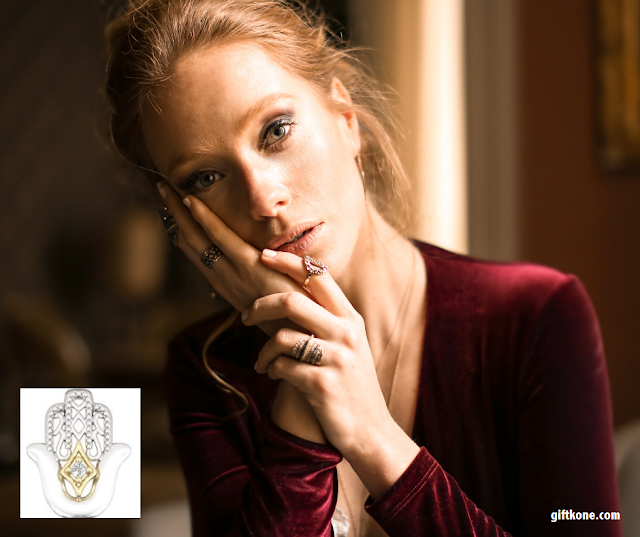Traditional Jewish Jewelry
The Hamesh hand or Hamsa hand is a popular Jewish motif in jewelry. Arab cultures often refer to it as the Hand of Fatima, which symbolizes the Hand of God. The Hamsa serves as an ancient talismanic way of averting the evil eye and providing a "protecting hand." The Hamsa appears often in stylized form, as a hand with three fingers raised, and sometimes with two thumbs arranged symmetrically. The symbol is used in amulets, charms, jewelry, cars, door entrances, and other places to ward the evil eye.
It's believed that The Hamsa origin predates Islam. The symbol was previously used in the Punic religion, which was believed to be based on their Phoenician forefathers where the Hamsa was associated with Tanit. In Israel and in Jewish culture it is most commonly known as "Hamsa", without any Islamic heritage connotations. Some sources link the significance of the five fingers to the five books of the Torah or to the five pillars of Islam.
The symbol was used in Israel in Roman times and seems to have become associated with Judaism in particular only in later centuries. It was in the 17th century that it became a popular practice to put the Star of David on the outside of synagogues, to identify them as Jewish houses of worship; however, it is not clear why this symbol was selected for this.
Today, the Star of David is a universally recognized symbol of Jews. It appears on the flag of the state of Israel, and the Israeli equivalent of the Red Cross is known as the Magen David Adom. The name David in ancient Hebrew is made up of three letters, "Vav" and "Dalet". The letter Dalet in ancient Hebrew is actually a triangle.
King David used the six-pointed star as his signature. The six-points symbolize that God rules over the universe and protects us from all six directions: North, South, East, West, Up and Down. King David used this symbol on the battlefield on his shield as an omen from God.
The Chai symbol is simply the Hebrew word Chai (literally meaning living), with the two Hebrew letters Chet and Yod attached to each other. The word refers to the Living God. Judaism is very focused on life, and the word Chai has great significance. There have been various mystical numerological speculations about the fact that according to the gematria system, the letters of Chai add up to 18.
Mezuzah is a small case affixed to the doorposts and gates of Jewish homes, synagogues, and businesses. The case generally features the Hebrew letter shin inscribed on it, which protects a piece of a parchment scroll, on which two passages are inscribed from the Hebrew Bible: the Shema Israel and V'havta.
Every time you pass through a door with a mezuzah on it, you touch the mezuzah and then kiss the fingers that touched it, expressing love and respect for God.
There are other Jewish symbols like the menorah, one of Judaism's oldest symbols, a seven-branched candelabrum or an oil lamp. It has been said that the menorah is a symbol of the nation of Israel. The design for the seven-candle menorah is given in the Torah. Let me close with The Hamsa Hand mention at the beginning of his post. The ancient good luck charm passed down through the centuries.
Luck and good fortune are said to be attracted to the bearer of The Hamsa Hand symbol. Be it a home or wall decoration to bring good luck and protect your house from evil or an attractive amulet or another piece of jewelry worn as a good luck charm. The Hamsa Hand is believed to ward off all negative energy, banish evil, and bring happiness to the wearer of this ancient Jewish symbol.
I have seen these symbols (The Hamsa and The Chai) worn by different celebrities and in dozens of beautiful jewelry designs. I had never made the connection between the symbol and its significance until now, but I found the information and the history behind the Hamsa Hand fascinating; if you were not aware of the above information before now, hopefully, you found this information interesting too.



Comments
Post a Comment